Condiments are everything. Your favorites don’t just add some flavor to a finished dish, they elevate it, transform it into something new, pull flavors together into a harmonious whole, and turn good food into great food. The best condiments help a simple bite become an absolute flavor bomb. There’s a reason every fast food chain lives and dies by its dipping sauces but remember, good condiments and sauces aren’t just a fast food or restaurant thing, you should have your own arsenal of secret weapons in your kitchen pantry that help to deepen the flavors of your home cooking.
With so many options in the market aisles beyond the obvious ketchup, mustard, and mayo, it can be tough to separate the good stuff from the bad. So we’re here to provide you with some winning suggestions from our food writers. From the international aisle to the online marketplace, here are all our favorite condiments and sauces that we can’t live without.
Bachan’s Original Japanese Barbecue Sauce — Dane Rivera
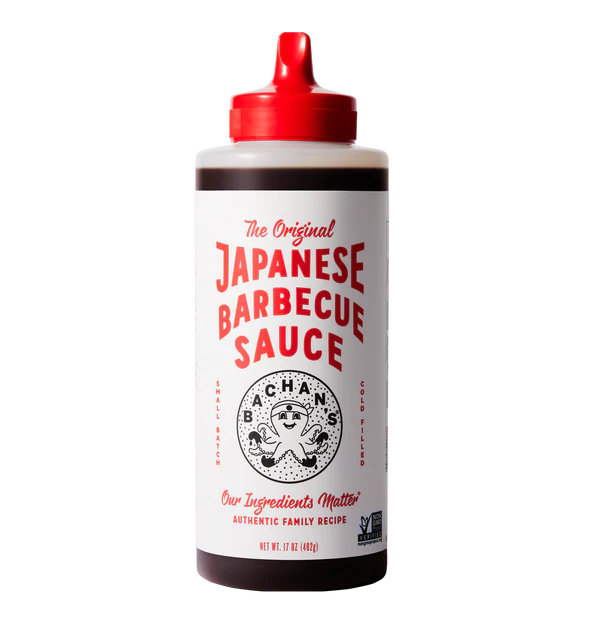
Why We Love It:
Bachan is essential. A delicious light teriyaki-like sauce that is perfect for finishing dishes or for basting while cooking. It’s salty, it’s sweet, and it’s well made. The ingredients list is sparse, as it should be: just soy sauce, cane sugar, mirin, tomato paste, ginger, green onion, rice vinegar, garlic, sea salt, and a hint of sesame oil, which helps to deepen the flavor of anything you’re cooking.
Anything you add it on, whether you’re pouring it over rice or searing a steak, will take on this sweet umami-rich flavor that will please your palate.
How I Use It:
On everything! If I’m cooking a stir fry I’ll pour this stuff all over it. If I’m trying to liven up some white rice, I’ll pour this stuff all over it. If I’m cooking any type of meat, I’ll pour this stuff all over it. Hell, I’ve even marinated some chicken in it, Bachan’s Barbecue Sauce is a kitchen workhorse that works on everything.
Where I Buy It:
A couple of years back Bachan was a bit harder to find at your local market but now it’s everywhere from Walmart, to Target, to Whole Foods, Kroger, and Costco. And there is a reason for the expansion — because it’s f*cking delicious.
Find your nearest store stocking Bachan here, and if you want an extra kick of heat be sure and try the “hot and spicy” version.
Mae Ploy Sweet Chili Sauce — Dane Rivera
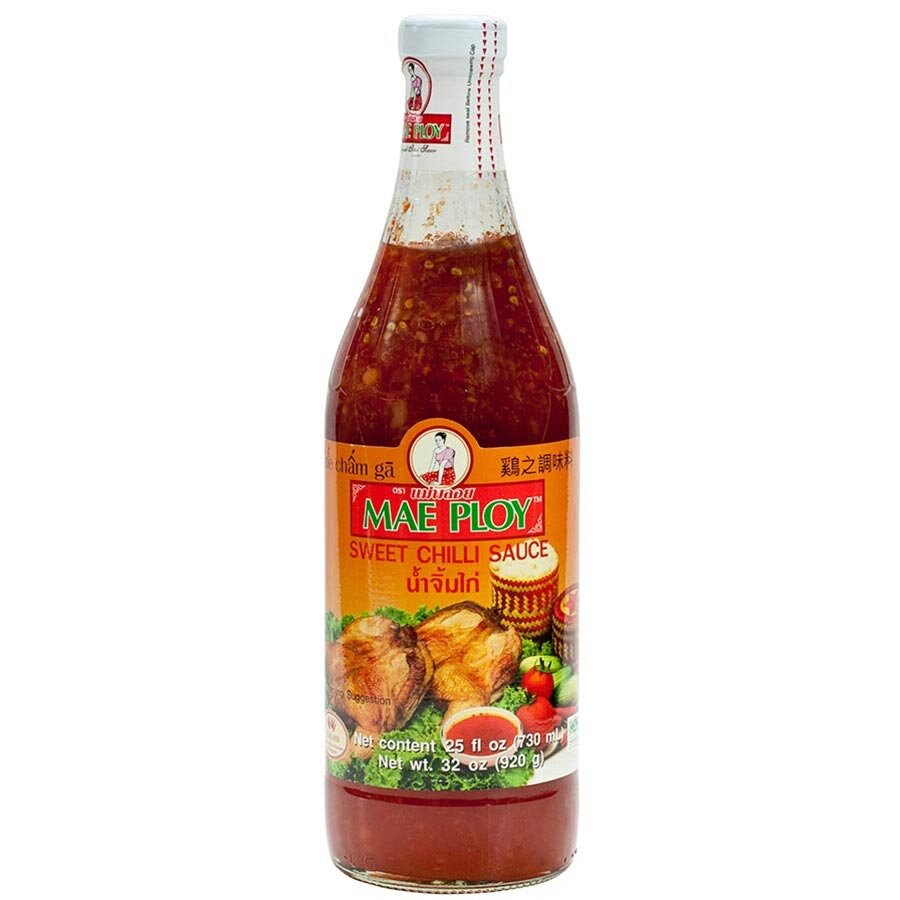
Why We Love It:
Mae Ploy offers a wonderful balance of sweet and gentle spicy flavors. Let me get this right out of the way, this stuff isn’t hot sauce — it’s not going to ignite your palate and form sweat on your brow. But it has enough of a kick to it that it’s addicting and will pull you in.
The flavor begins sugary sweet with a hint of tang to it before the heat starts to build on the aftertaste. If you love restaurant egg rolls, you’ve probably dipped them in a sauce that is a lot like this one. The ingredients list is simple: sugar, water, pickled red chili, vinegar, garlic, salt, and xanthan gum to keep the sauce shelf stable.
How I Use It:
The obvious way to use this is to dip egg rolls in it, but I like to get a spoonful of this stuff after I make a stir fry and mix it around in my bowl for some extra sweetness and gentle heat. Because it’s such a simple sauce this stuff works on pretty much anything.
Where I Buy It:
You’ll find Mae Ploy in the International Aisle of most markets. Click here to find it at a store near you.
Mrs. Renfro’s Jalapeño Green Salsa — Dane Rivera
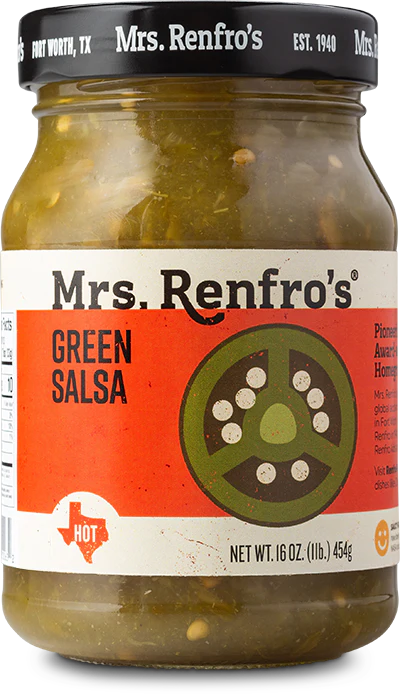
Why We Love It:
I live in Southern California, so I’m lucky enough to have access to more Mexican food spots than I can ever eat at in an entire lifetime. That means there are about 50 different random salsas in my fridge at any given moment, so most of the time I’m topping meals with salsa from my favorite Mexican joint. On the rare occasion when I have no leftover salsa — or they’ve been in the fridge for way too long — Mrs. Renfro’s Jalapeño Green Salsa is my go-to.
I know this is a Texas-based brand so I’m betraying my California roots but I have to hand it to the Lone Star State — this salsa is the best.
It’s thick with a mild vegetal heat that adds brightness to meat dishes and a dark and savory finish to meatless meals. Aside from the earthy and roasted flavor of jalapeño, you’re getting a good dose of onion and garlic here too, which adds a lot of complexity to anything you pour it on.
How I Use It:
Anytime I make homemade nacho fries. There is something about the way this salsa soaks into homemade fried potatoes that just tastes like heaven on Earth. Cut up some potatoes and fry them, top it with some freshly seared carne asada, beans, cheese, cilantro, and avocado, top it off with Mrs. Renfro’s, and BAM you’ve got a meal that is going to make everyone on Instagram jealous.
And you will post about this dish because it looks that good.
Where I Buy It:
You should have no problem finding this in the salsa aisle of your local market. Find your nearest store stocking Mrs. Renfro’s here.
Momofuku Hot Honey — Steve Bramucci
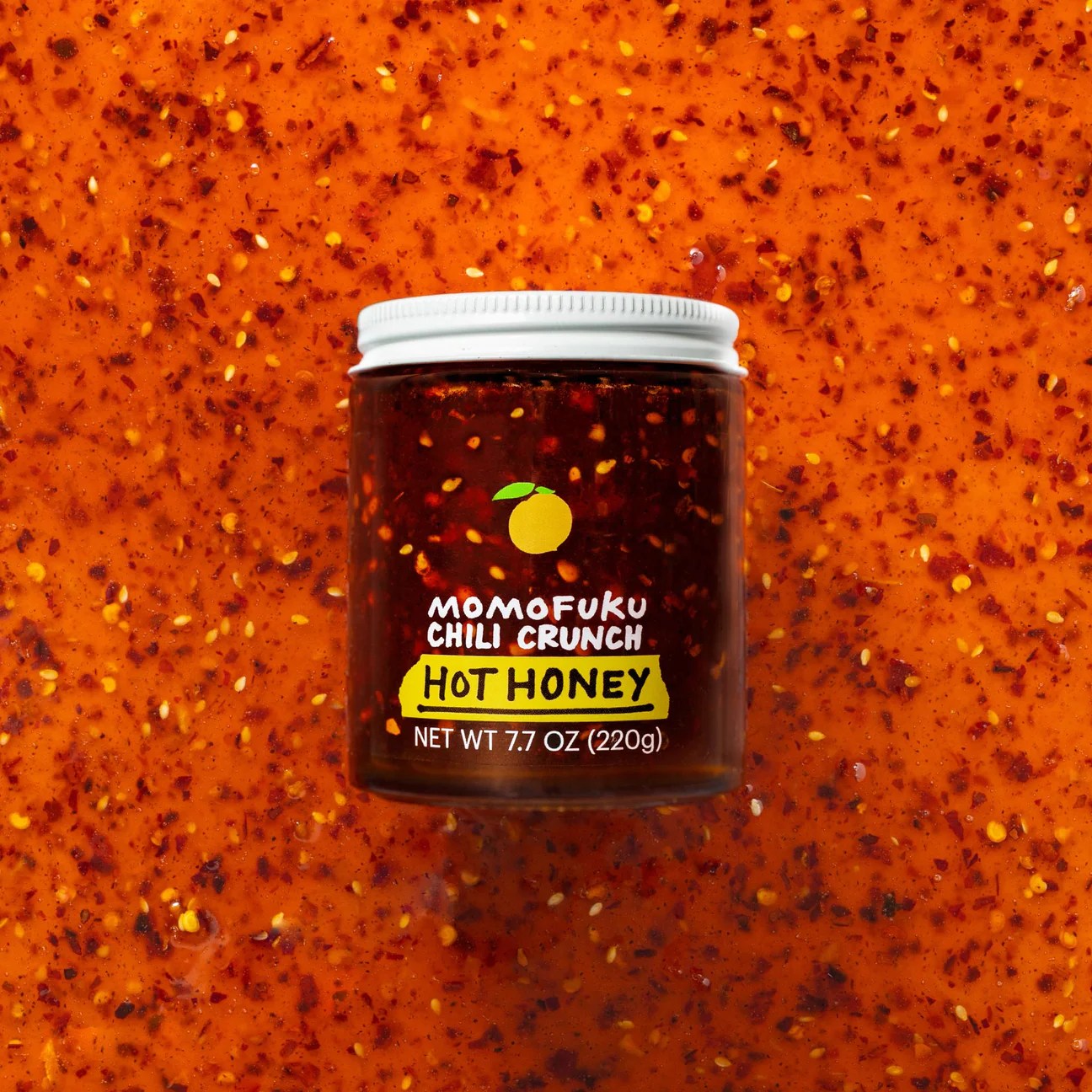
Why We Love It:
Everyone else’s hot honey is honey first and heat second. This is heat first — it’s still labeled a chilli crisp — but boy that hit of sweetness is lovely and layered. It sort of feels like a reversal on the hot honey trend and that’s perhaps why I use it so much. It’s much more versatile because it’s not overly sweet while still adding those floral, honey notes.
How I Use It:
This will change your life… ready? Roast a chicken. Get to the point where you’re 45 minutes from done. Lather this on with a basting brush and roast those final 45 minutes. The hot honey chicken you create will be a joy in your household for a whole week.
Where I Buy It:
Smoked Mushroom Garum by Noma — Steve Bramucci
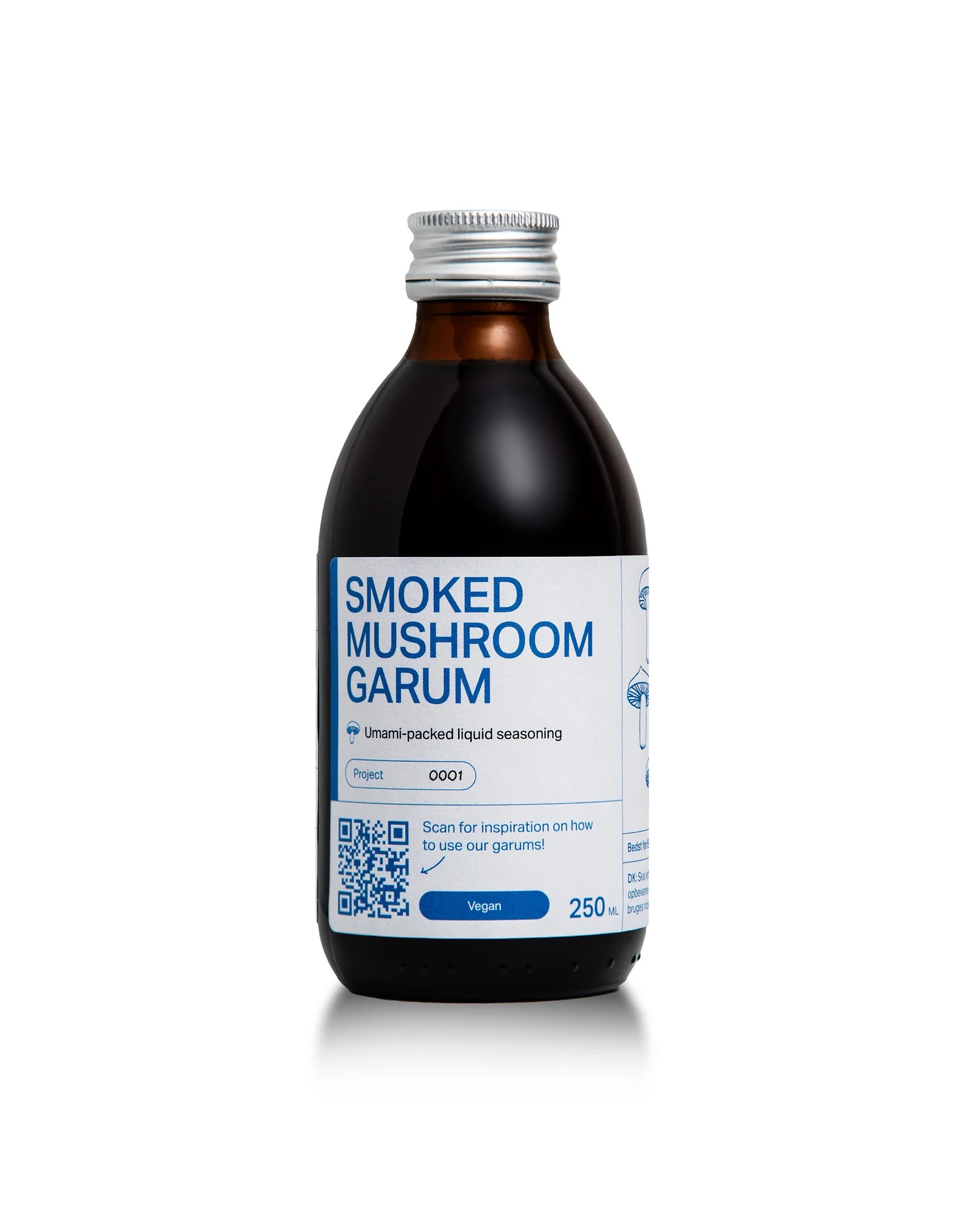
Why We Love It:
I reviewed this product when it first came out and in the year since, I’ve only grown to like it more! Here’s my original review:
Don’t wedgie me, but.. this smells like the inside of a pizza oven that has been used a few hundred thousand times. You get the meaty notes and the earthiness. There’s a little bit of funk but it’s light enough that it could as easily be from a few stray mushrooms and some cheese that slid into the oven’s deepest reaches as it could be from some super scientific process invented by Noma Projects.
It tastes mostly like mushroom broth with… a bit more. There’s some smokiness. There’s some funk. It’s a less funky fish sauce but certainly doesn’t taste un-fishy. There’s a meatiness. That’s the flavor this product seems to cultivate the most “meatiness without real meat.” There’s a light fermented note.
After sipping a spoonful I wrote this down: “Yet another reminder that we don’t need ‘fake meat’ to imitate beef and pork. We already have mushrooms.”
It’s also pungent and pronounced enough that once you’re used to it you can kinda-sorta discern its presence (like fish sauce), rather than just using it because you believe my review or have faith in Noma’s prowess. I like that it doesn’t just fully vanish into a dish.
How I Use It:
Here’s how I used my bottle of mushroom garum before it ran out:
A capful in taco meat.
A capful in ground beef for smash burgers (which my nephew deemed “Better than Mcdonald’s!”)
A capful in carbonara sauce.
A capful in chicken soup.
Two capfuls in stewed dandelion greens.
Three capfuls in Thai beef larb.
Three capfuls in ramen broth.
Four capfuls in vegan “cheesy” potatoes.
You get the idea. I tried it with everything. Sometimes vegan; sometimes not. I often paired it with other flavor enhancers, like MSG or actual fish sauce. And of course, I also tasted it plain for the sake of this review:
Where I Buy It:
I’ve never seen this in stores, I think you have to go to the NOMA website.
Dumpling Sauce — Janice Williams
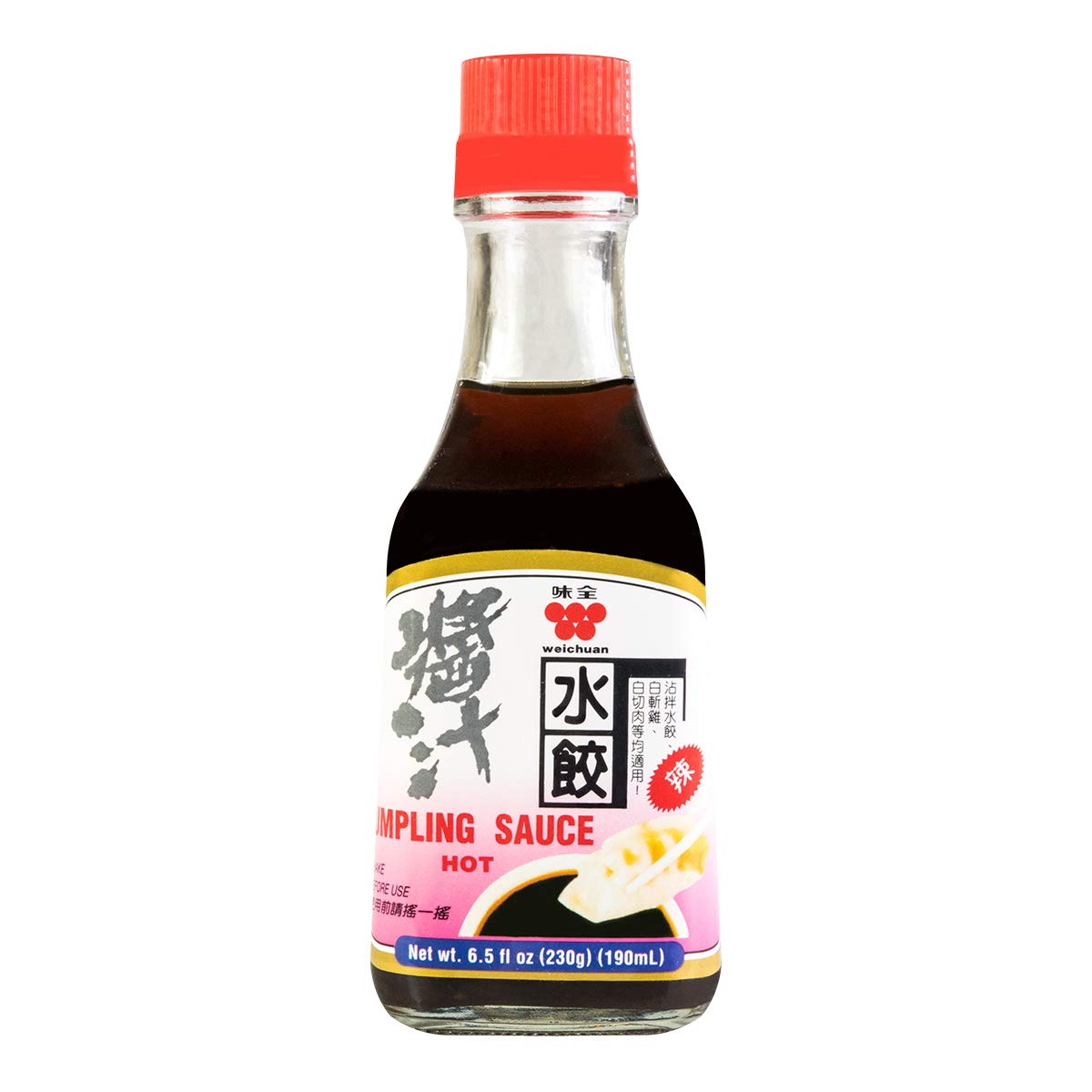
Why We Love It:
I love dumplings. Steamed or pan-fried. Stuffed with pork or veggies, chicken or shrimp—it doesn’t matter, I want to eat them. If you put a platter of them in front of me, I will inhale that platter and leave not a single one for you. I will order them from anywhere at any time on any day or night. I will hop on the train to Chinatown when it’s 20 degrees and snowing just to eat my weight in Shanghainese Soup Dumplings at Nom Wah Tea Parlor, and I won’t feel the least bit bad for placing a second order to go.
Shumai? Goyza? Potstickers? Frozen dumplings from my local grocery store? Give them to me. I’ll eat those too.
Naturally, as a self-proclaimed dumpling enthusiast, I know that the best way to enjoy dumplings is with the proper sauce. You could go the traditional soy-sauce route (trust me, I do that, too), but nothing quite brings out the flavor of the filling or compliments the dough quite like the salty, sweet, sometimes spicy, sometimes tangy dumpling sauce. Most have a dash of sesame oil that punches up the flavor with a little nuttiness, and there’s a barely-there sweet aftertaste that’s a little more satisfying to the senses than straight-up soy sauce.
There are plenty of dumpling sauces that exist in this world, but my go-to is Wei-Chaun. I prefer the hot flavor, but there’s a mild version for those who can’t stand the heat.
How I Use It:
I quite literally bathe my dumplings in this stuff. The way it enhances the dumpling’s natural taste, I need it on every bite. But you can use this sauce for more than that. Drizzle a little on the top of a burger hot off the grill. Are you eating veggie and meat kabobs? Dunk those suckers in that sauce, too.
Where I Buy It:
You can find some brands and styles of dumpling sauce in the international food aisle of most grocery stores, and there’s always Amazon. But for the most variety, hit up your local Asian market.
Fish Sauce — Zach Johnston
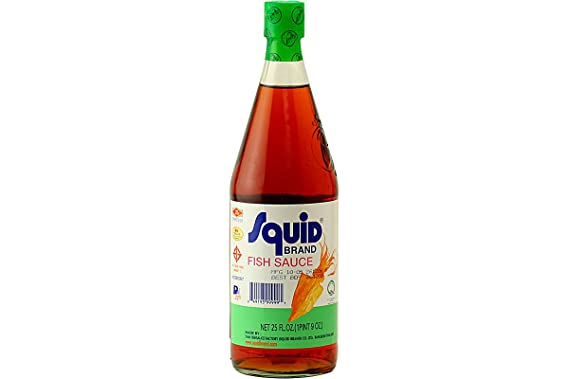
Why We Love It:
Fish sauce, specifically Squid Brand, has been a part of my life for a very long time. I’d like to say I picked up using the fishy-smelling juice when I lived in Southeast Asia back in the mid-aughts, but I’d already been using it for years before that. I was sort of always aware of fish sauce — having grown up in the Pacific Northwest where a decent bowl of tangy soup or fried noodles was never far away — then started using it heavily for myself in Prague in 2003.
There’s a large Vietnamese community in Prague (mostly thanks to those two countries both being communist regimes in the 20th century) and that means there are a few markets around the outskirts of the city devoted to imports from Vietnam and Southeast Asia, in general. Those spots turned me on to a lot of good food. My addiction only grew once I actually lived and worked in Southeast Asia.
These days, fish sauce is something I use all the time. So much so, that I buy the big bottle of Squid Brand — the one that’s the same size as a whisky bottle. And it only lasts about as long as a bottle of good whiskey. Put simply, it’s one of the most versatile condiments/flavor enhancers there is. It’s like Worchestershire times a million or soy sauce with a nice funk that’s somehow lighter while also bringing more umami.
An absolute must for any serious home cook.
How I Use It:
A trick I learned working in kitchens in Europe was that chefs would use Squid Brand fish sauce in place of more expensive anchovy in recipes from all over the continent (fish sauce used to be huge in Roman cuisine, for instance). It’s ~basically~ anchovy essence that’s also pure umami. So I started adding it to yolk-based salad dressings. It also works in things like meatballs when you want that extra savory oompf. Dash some on rice when you fluff it to add new depth. Hell, dash some on freshly popped popcorn.
Of course, there are soups, stews, and dry noodle applications. One of my favorite uses is a cold noodle side that’s just fish sauce, crushed garlic, diced green onion, brown sugar, sesame oil, and sesame seeds. Spritz it all with lemon juice and you have one of the best sides for steak or salmon ever.
The point is that, yes, this is very much a necessity if you’re trying to figure out dishes from the eastern reaches of Asia. But don’t stop there. Umami is a key flavor component in cuisines the world over (anchovies were a huge trading commodity of my father’s people around the Salish Sea before Europeans showed up) and fish sauce makes almost everything savory better.
Where I Buy It:
Generally, the Costco-like store I do my weekly shopping at has Squid Brand for around $4 for a big bottle. You can find it in any Korean, Chinese, Thai, or Vietnamese supermarket in the States if you’re in a region where those pop up.
Otherwise, you can grab a bottle on Amazon.
Maggi — Loan Hoang
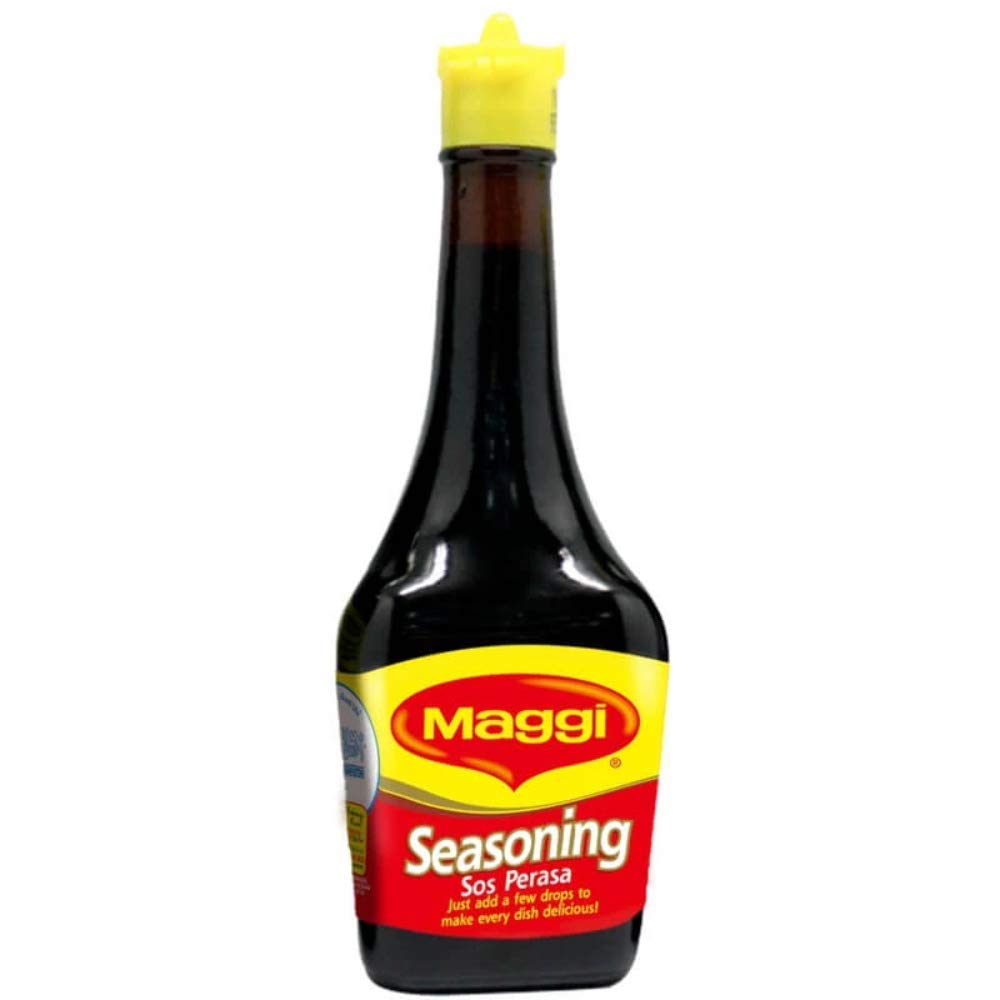
Why We Love It:
Growing up, I didn’t pay attention to the various brown liquids in my mother’s pantry besides the xì dầu (soy sauce) and nước mắm (fish sauce). In our house, the soy sauce that my sisters and I loved on our rice and eggs, lived in a small bottle with a bright yellow label and red lettering spelling out “MAGGI.”
How I Use It:
In 2006, I had the chance to go to France and Italy at the end of my high school senior year as part of a special trip for AP Gov. While preparing for my trip, my aunts asked me if I could bring them back Maggi Sauce from France and to “make sure it’s the French version.” I was surprised that out of anything they could have asked me to buy, they asked for something so readily available in our supermarkets.
It was only then that I learned Maggi wasn’t soy sauce at all. Maggi is a seasoning sauce (made from hydrolyzed vegetable protein instead of soy) and different countries produce different versions. For my aunts, the French version was the best and it was not yet available in our markets at that time.
I like to use the Chinese Maggi in my everyday cooking—it has a strong, salty, umami profile that goes well with stir-fries and soups.
Where I Buy It:
Luckily today, you don’t have to travel far to try out the different versions of Maggi. They’re readily found in supermarkets and online. As a standalone condiment, I prefer the Maggi Arome Saveur French version, which is a bit milder. If you’re able to get your hands on the Mexican version “Jugo Maggi Limon,” you’ll be able to taste a nice kick of lime in your seasoning sauce.
However…I have yet to get my hands on the Filipino version of Maggi, which is supposed to have more of a garlic flavor to it. Perhaps a trip to the Philippines is in order, post-Covid. As high school me learned: This is a sauce worth traveling for.
S&B Umami Topping-Crunchy Garlic With Chili Oil — Vince Mancini
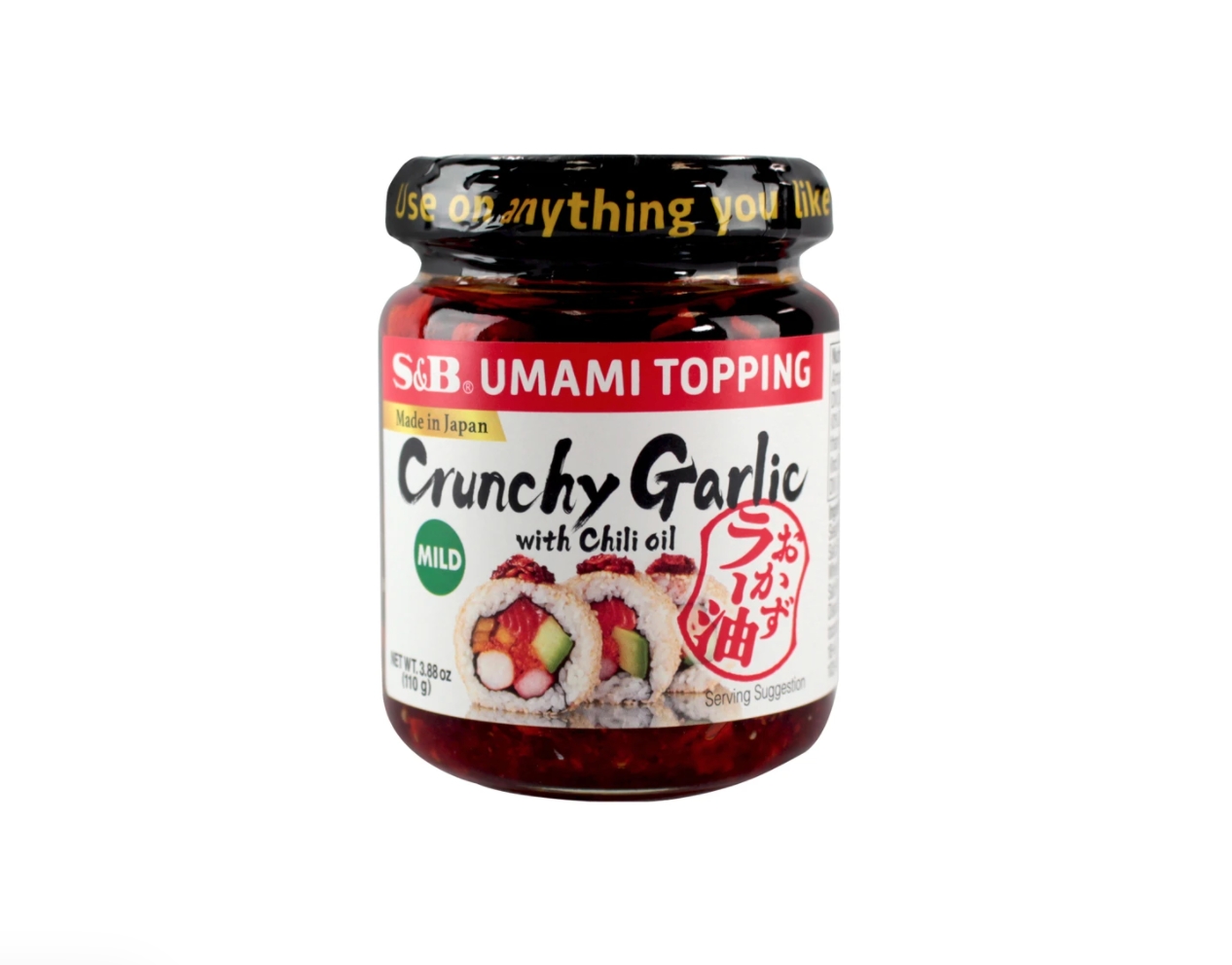
Why We Love It:
A friend introduced me to this stuff from the Asian market a while back and I haven’t gone a day since without it in my fridge. It’s great because while I love all things spicy, my stomach and bowels don’t always agree. This stuff comes in “spicy” and “mild,” but neither are really what I would call “hot.” They add a deep, rich concentrated spice flavor that I can eat as much as I want without worrying that it’s going to put me on the toilet all morning.
How I Use It:
Frying up garlic is something that you *can* do on your own, but having it pre-prepared in a jar is my kind of labor saver. I most often use it on salmon, pork tenderloin, or noodle soups (ramen, pho, etc) but I’ve yet to find a food that it doesn’t improve.
Where I Buy It:
I buy mine at the Asian market in Fresno, but it’s available on Amazon.
Harissa — Janice Williams
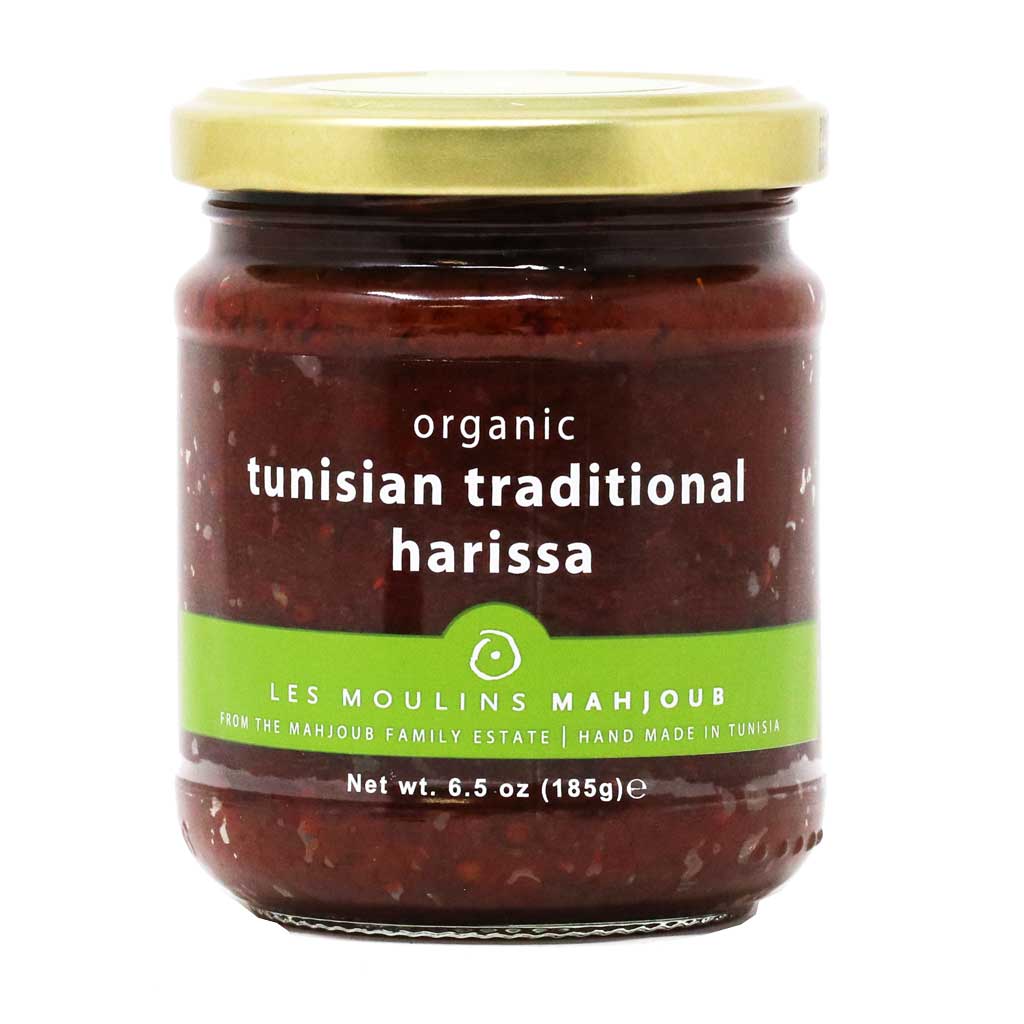
Why We Love It:
During my brief tenure as a waitress in New York City, I worked at a dashing restaurant in the West Village named Bar Bolonat. It was the sister restaurant to the highly acclaimed Balaboosta, owned by the feistiest, sassiest and liveliest woman I’ve ever met, chef and cookbook author Einat Admony.
It was at that little restaurant, which specialized in Israeli and Mediterranean cuisine, where I learned the value and significance of harissa—a vibrant and beautiful red hot chili pepper paste that set my mouth on fire the first time that I had it slathered atop of slice of grilled eggplant with a little tahini, togarashi, and crispy shallots. I was hooked!
Spicy and aromatic, harissa is commonly used in North African and Middle Eastern cuisine. The recipes for the condiment vary from country to country, but the classic components are usually the same across the board: hot and smoked chili pepper, olive oil, garlic, and a blend of spices like cumin, caraway, and coriander.
My waitressing days are behind me, and Bar Bolonat no longer exists (you can still visit Balaboosta, though!). So now I get my harissa fix via Les Moulins Mahjoub, a Tunisian company that produces a variety of tasty natural grains and spices.
How I Use It:
Use it as a spread. Use it as a dip. Blend it into your soups and stews. Use it to marinate your grilled meats and fish, too. Got bread? Scoop it up and get it in your mouth. There is no wrong way to use harissa, but one of my favorite ways to use the condiment is as a baste for baked chicken legs and thighs. Spread it over the chicken along with a little salt, pepper, and garlic. Toss it in the oven for a good 45 minutes and—BOOM!—dinner is served.
But beware: this condiment lands high on the hot and spicy meter. So a little goes a long way.
Where I Buy It:
I order jars of harissa from my favorite online artisanal grocery shop, My Panier, but you can find Les Moulins Mahjoub and other brands at Whole Foods and Middle Eastern Markets.
Lizano Salsa — Steve Bramucci
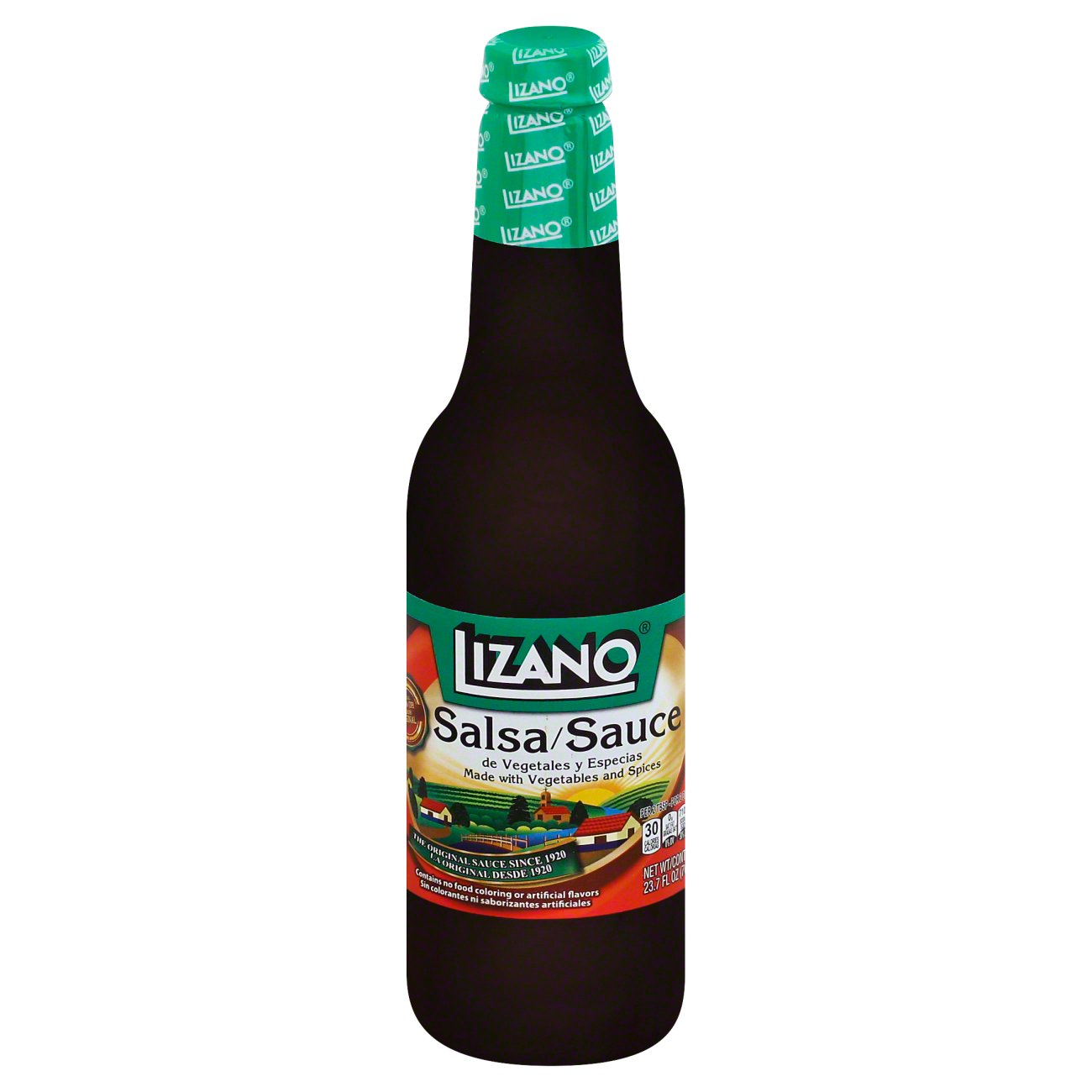
Why We Love It:
In Costa Rica, they have these beans in a bag — also made by Lizano — that are backpacker-famous (and locally beloved!). Especially among surfers. And because the various styles of beans (red, black, and pinto) aren’t exported, the only way to get them is to bring them home from a trip or have someone lug a few packs along when they visit you. At my wedding, two friends brought me an entire suitcase full. Sadly, it never made it through customs.
For years, I’ve tried to unlock what makes Lizano beans so good. Mostly, I figured it was lard. And I’m sure that’s pretty much correct. But by contacting the company for an article, I learned that this salsa is also a core ingredient. Since that discovery, I’ve used the stuff pretty much every day.
How I Use It:
I pour a little bit into the bases for many of my foods — it’s sort of like a liquid soffrito. It’s in every single bean-based recipe I make, bar none. I also put it into my ground beef during the cooking process if I’m making tacos or sloppy joe’s. Used as a traditional condiment, without being cooked down, it’s pretty potent. I’ll often add some a little to a simple rice and bean dish to amp up the umami or treat it like a salad dressing for greens. It’s also fantastic as an additive to your guac or any store-bought salsa.
It’s a little vinegar, a little oniony, a little sour, a touch sweet, and it has a hint of spice. But above all, it’s a true umami bomb (basically it’s vegetarian broth, reduced down to a syrup) that I refuse to live without.
Where I Buy It:
There are Costa Rican shopping sites that carry it (and the beans!), but the shipping costs are exorbitant. I most often rely on Amazon, which sells the full-sized three-pack for $22.







